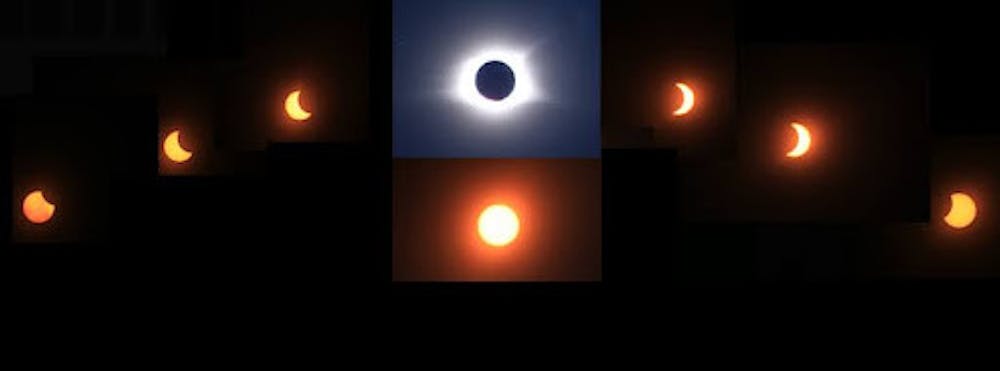By Aimee Bulger
Staff Writer
A solar phenomenon is headed in our direction. On April 8, a total solar eclipse is scheduled to pass over North America, covering different parts of Mexico, Canada and the United States. Each area will see a different level of darkness depending on the location in accordance to the path of the eclipse.
An eclipse occurs when the moon’s path overlaps with the Earth’s view of the sun, creating a tie of darkness that can be either partial or total, depending on the path and the location from where you view it, according to NASA.
According to the American Astronomical Society, the moon’s dark shadow, spanning 115 miles wide, will cross America in a path starting down in Texas and working its way up to Maine. The path of totality coverage spans 70 miles wide, covering several places in America with total darkness.
People viewing the eclipse from the College can expect a 90% partial eclipse, according to NorthJersey.com, with the eclipse entering its partial stage at around 2:08 pm, reaching its peak at 3:24 p.m. and ending at 4:35 p.m.
According to Architectural Digest, the eclipse will be best seen in Texas, Oklahoma, Arkansas, Missouri, Illinois, Kentucky, Indiana, Ohio, Pennsylvania, New York, Vermont, New Hampshire, Maine, and small areas of Tennessee and Michigan.
The last time that the United States saw a total solar eclipse was Aug. 21, 2017, the first one since 1979, according to the American Astronomical Society.
During the eclipse, the physics department has organized an event to provide information and viewing for students who are interested.
“The physics department will have a table with information about eclipses as well as tools to look at the partial eclipse (90% at the maximum) near the Brower Student Center,” said Professor Lauranne Lanz, a physics professor at the College. “They will likely be there from 2-4:30 pm, which is essentially the entire duration of the partial eclipse here.”
Although the sun will be covered, viewing the eclipse with eye safety is still advisable. Eclipse glasses or secondary viewing methods are recommended by NASA when the eclipse is in partial coverage stages, as looking directly at the sun can be damaging to the eyes. If you are in a location where the eclipse will have total coverage, it can be viewed directly, but only while the sun is completely covered, according to NASA.
“90% blocked of a massive forest fire is still dangerous, just as 90% of the Sun blocked is still dangerous,” said physics Professor Mariah MacDonald in email.
Since the information of the orbit of the sun, moon and Earth are all known, the timing and paths of eclipses can be easily calculated, and have been up to the year 3000.
“We know the orbits perfectly well and can just calculate when things will happen (the calculation is similar to a common denominator calculation that you do in elementary school),” MacDonald said.
According to NASA, the next total solar eclipse visible from the United States will take place on Aug. 23, 2044. So make sure to carve out some time to stop by the Stud, get some glasses and take a look!







